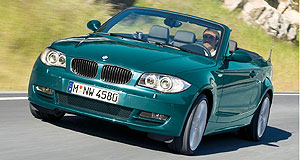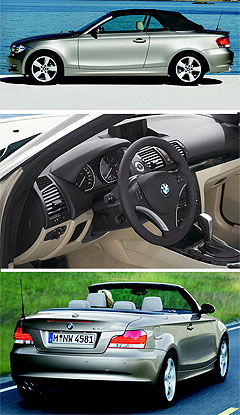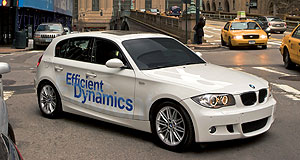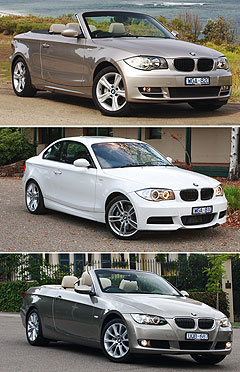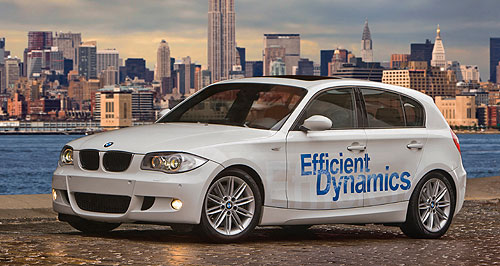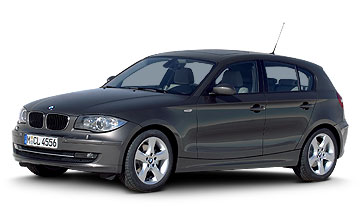BMW's 'Power of One' gets six of the best

Step lively: The 130i will make its Australian debut late this year.
BMW's diminutive 1 Series gets an overdue six-cylinder power boost

A SIX-CYLINDER engine in BMW's 1 Series was an all-too-obvious omission when the car was released last October, for it was the one area in which the 'Power of One' claims fell well short.
But now the confirmation has come.
To be shown at the Geneva motor show next month ahead of an Australian debut late in 2005, the 130i will hand the small hatchback the liveliness its chassis deserves.
It will use a 3.0-litre inline-six able to achieve 190kW and 300Nm, and benefiting from new lightweight components that maintain the 50/50 weight distribution achieved in less powerful models.
According to the manufacturer, the 130i can reach 100km/h from standstill in 6.2 seconds when combined with a six-speed manual gearbox, on its course towards a maximum 250km/h.
It also claims test drivers have lapped the Nurburgring Northern Loop in 8min35sec, which tends to be more in the realm of M-badged vehicles.
Known as the R6, the engine uses BMW's Bi-VANOS and VALVETRONIC valve opening and valve lift control mechanisms, and is further claimed to consume 9.0 litres of fuel over the official EU benchmark test.
It uses an aluminium-magnesium composite block - said to be a world first for a six-cylinder engine, using a design derived from the 5.0-litre V10 found in the M5/M6 sports cars - and an electrically driven water pump designed to cut down on internal engine friction and improve efficiency.
The car shown here is shod with 17-inch V-spoke lightweight alloys and also features some subtle design modifications such as chromed grille slats at the front and twin chrome tailpipes at the rear.
Pricing and specification are still to be announced, however the cabin will feature sports seats, leather on the tiller rim and unique instrument gauges. 'Active steering' will also be available, a first for 1 Series.
All models in the series are fitted with run-flat rubber, traction and stability control, cornering brake control and six airbags.
But now the confirmation has come.
To be shown at the Geneva motor show next month ahead of an Australian debut late in 2005, the 130i will hand the small hatchback the liveliness its chassis deserves.
It will use a 3.0-litre inline-six able to achieve 190kW and 300Nm, and benefiting from new lightweight components that maintain the 50/50 weight distribution achieved in less powerful models.
According to the manufacturer, the 130i can reach 100km/h from standstill in 6.2 seconds when combined with a six-speed manual gearbox, on its course towards a maximum 250km/h.
It also claims test drivers have lapped the Nurburgring Northern Loop in 8min35sec, which tends to be more in the realm of M-badged vehicles.
Known as the R6, the engine uses BMW's Bi-VANOS and VALVETRONIC valve opening and valve lift control mechanisms, and is further claimed to consume 9.0 litres of fuel over the official EU benchmark test.
It uses an aluminium-magnesium composite block - said to be a world first for a six-cylinder engine, using a design derived from the 5.0-litre V10 found in the M5/M6 sports cars - and an electrically driven water pump designed to cut down on internal engine friction and improve efficiency.
The car shown here is shod with 17-inch V-spoke lightweight alloys and also features some subtle design modifications such as chromed grille slats at the front and twin chrome tailpipes at the rear.
Pricing and specification are still to be announced, however the cabin will feature sports seats, leather on the tiller rim and unique instrument gauges. 'Active steering' will also be available, a first for 1 Series.
All models in the series are fitted with run-flat rubber, traction and stability control, cornering brake control and six airbags.
